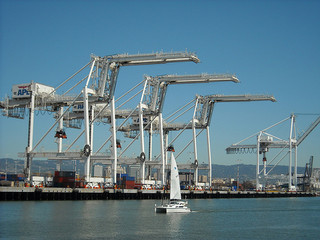 Overall confidence levels in the shipping industry fell in the three months ended August 2012 to their lowest level for a year, according to the latest Shipping Confidence Survey by London-based accountant and shipping adviser Moore Stephens.
Overall confidence levels in the shipping industry fell in the three months ended August 2012 to their lowest level for a year, according to the latest Shipping Confidence Survey by London-based accountant and shipping adviser Moore Stephens.
The fall—the lowest figure recorded since the survey was launched in May 2008 with a confidence rating of 6.8—comes after three successive quarters of improved confidence. Chief among the concerns raised by respondents were the glut of newbuildings coming onto the market and continuing uncertainty about the global economy.
Average confidence level for August 2012 was 5.3 on a scale of 1 (low) to 10 (high), down from 5.7 in May 2012.
Charterers were the only category of respondents to report an increase in confidence for August, up 5.7 from 5 in May of this year. Managers had the highest rating of 5.9, down from 6 last time.
Owners’ confidence was down from 5.6 to 5.1, the lowest rating. Brokers’ confidence levels also dove from 5.2 in May to 5 in August.
Geographically, confidence in Asia hit a new survey low of 5.4 (down from 5.7 last time), while Europe was down from 5.6 to 5.2.
“It is hard to be confident at the moment,” one respondent said. “Companies are burning up cash reserves at a frightening rate … Supply trends are still very negative. Banks are increasingly reluctant to put out any money … The economic outlook, particularly in Europe, is dismal, while China looks increasingly likely to suffer a hard landing.”
Another said, “It is astonishing that a whole industry has been misreading the markets, which has led to the prospect of excess building capacity for years and years to come, based on wrong assumptions by analysts.”
Overtonnaging was the top concern, typified by the comment, “The shipping market will remain difficult for the next few years. More owners are now tempted to order new ships as building prices will be at their lowest level for many years … So the market will be flooded with more new vessels, extending the time it will take for the industry to recover.”
The combination of political and economic uncertainty and depressed shipping markets was a dominant theme in many responses to the survey. “The recovery of the shipping industry,” said one respondent, “will depend on the recovery of European economies from financial crises, on the amount of new tonnage coming onto the market, and on the development of China’s import and export markets. The current stagnant situation is unlikely to change within the next twelve months.”
Banks also featured in a number of responses to the survey. “The accelerating withdrawal of banks from the shipping finance market is effectively depressing ship values,” said one respondent.
On a scale of 1 to 10, the likelihood of respondents making a major investment or significant development over the next 12 months remained stable at 5.3, the highest figure since the 5.6 recorded in May 2011.
Geographically, expectation levels of major investments were up in Asia, from 5.2 in May to 5.3 in August, but down in Europe, from 5.3 to 5.2. The biggest increase was in North America, up from 4.5 to 5.7.
Demand trends, competition, and finance costs once again emerged as the top three factors cited as likely to influence performance over the coming 12 months. The numbers were up for demand trends (from 21 percent in May 2012 to 22 percent in August) and for finance costs (16 to 17 percent), but down in the case of competition, from 18 percent to 17 percent.
Geographically, demand trends remained the most significant factor for respondents in both Europe (up from 21 percent to 23 percent) and Asia (down from 24 percent to 21 per cent). In Europe, finance costs (unchanged at 19 percent) featured in second place, ahead of competition (down 2 percentage points to 16 percent).
In Asia, meanwhile, it was competition which featured in second place, despite being down 2 percentage points to 16 percent, ahead of fuel costs, static at 16 percent.
On freight rate increases in the container ship market, there was a 2 percentage point fall overall, to 32 percent, in the numbers expecting rates to go up. Expectations of improved rates were up in Asia (from 28 percent in May to 30 percent in August) and in North America (from 39 percent to 41 percent) but down in Europe by 4 percentage points to 34 percent.
“The fall in confidence recorded in our latest survey is clearly a disappointment. But it cannot really be termed a surprise,” said Richard Greiner, Moore Stephens shipping partner. “In some respects, shipping has been bucking the trend for the past twelve months, exhibiting increased confidence despite the political and financial woes in Europe and elsewhere, and the problems of overtonnaging and falling rates.
“Unless you are a charterer, it is difficult to find too many operators who believe that rates in the main trades are likely to move upwards over the coming twelve months … as always, [it will] be market forces which ultimately dictate the winners and losers. Clearly, tonnage supply—both actual and incipient—currently exceeds demand in most trades. Increased scrapping will help, but it will still be necessary to renegotiate commercial arrangements.”
Greiner said that to survive the current difficulties, the shipping industry should look at “good, long-term contracts with reliable business partners” and summon “the nerve, the wherewithal and the financial backing to sell its expertise and service at a self-supporting price.”
Photo: jdnx




